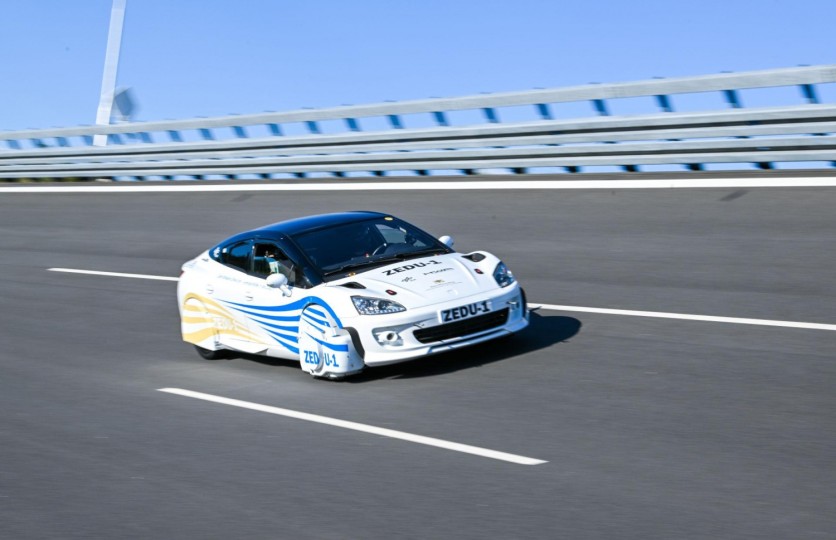As part of their Zero Emission Drive Unit - Generation 1 (ZEDU-1) project, the German Aerospace Center (DLR) and the engineering company HWA have developed and successfully tested a road vehicle that enables virtually emission-free transportation.

"Most Environmentally Friendly"
The electric car greatly cuts the emission of particulate matter and microplastics caused by the abrasion of brakes and tires. DLR claims that their road vehicle is the "most environmentally friendly" in operation worldwide.
The prototype was first shown to the public on September 28, 2022, in Stuttgart by DLR and HWA. The project has received a six million euro investment from the Baden-Württemberg Ministry of Economic Affairs, Labor, and Tourism.
"Our priority is human health and an environment without pollution. The ZEDU-1 project focuses on components that have received rather little attention so far and whose emissions are now gradually being regulated by the EU Commission through legislative measures - specifically tires and brakes," Tjark Siefkes, Director of the DLR Institute of Vehicle Concepts in Stuttgart said in a statement.
Breaking Ground
The project team broke uncharted technological ground when they removed the disc brake, which is traditionally used in the well. The brake is instead removed from the wheel and integrated into the closed electric motor gearbox unit using a multi-disc brake.
When employed in conjunction with specifically created high-performance electronics, the braking energy can be entirely recovered. As a result, the drive unit may be built very compactly, and the size of the braking parts can be kept to a minimum.
The discs are submerged in an oil bath. After the abrasion enters the oil, it is regularly circulated through a filter and cleaned. In addition to the mechanical multi-disc brake, the team also developed an induction brake for the ZEDU-1 prototype.
This induction brake employs magnetic fields to generate a braking motion, which results in nearly no abrasion up until it stops.
There is more potential for cutting-edge technical innovations that dramatically reduce tire wear when the brakes are moved from the wheel to the engine and wheel housing acts as the foundation for this, according to DLR.
The ZEDU-1's closed wheel is aerodynamically constructed to produce negative pressure while it is moving. As a result, just one area of the tire experiences abrasion.
The particles are removed by a fan unit at the front of the car, which filters them using a hoover-like system. The car only emits clean air through this process.
The DLR claims that during its initial testing, the ZEDU-1 successfully captured and secured all of the minute particles and microplastics produced by tire and brake wear at speeds of up to 31 mph (50 kph).
The device could minimize tire wear-related FPM pollution by 70 to 80 percent above that speed. The technology will then be enhanced in collaboration with business partners so that it is prepared for mass manufacturing.
The ZEDU-1 prototype will be on display for the public at the ADAC GT Masters championship in Hockenheim from October 21-23, 2022.
This article is owned by Tech Times
Written by Joaquin Victor Tacla
ⓒ 2026 TECHTIMES.com All rights reserved. Do not reproduce without permission.




